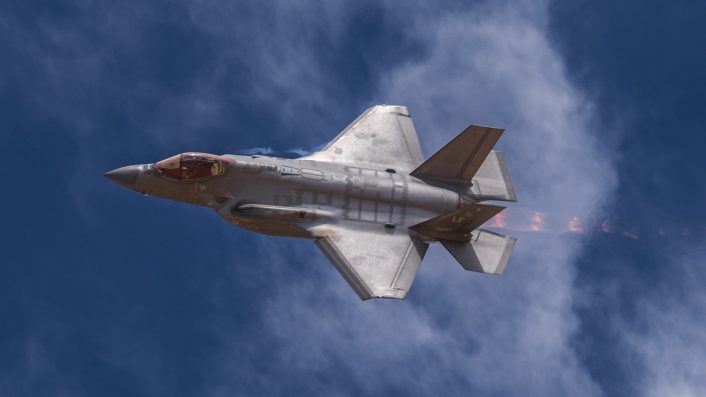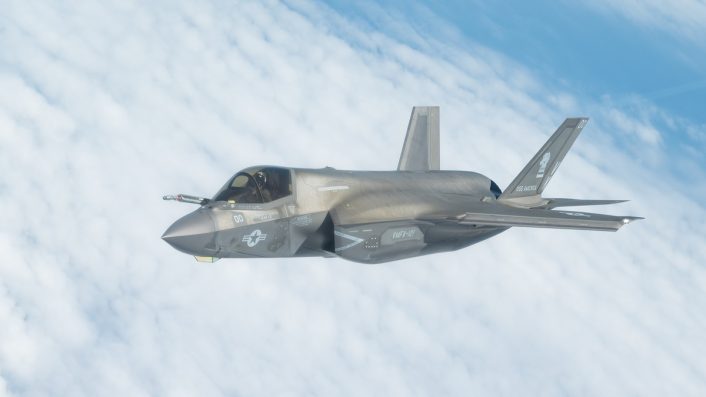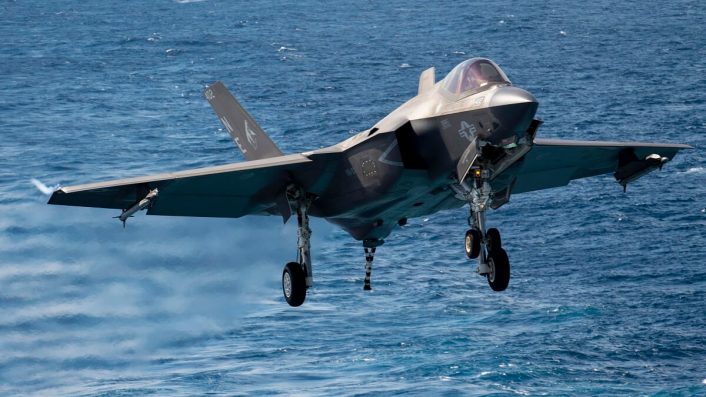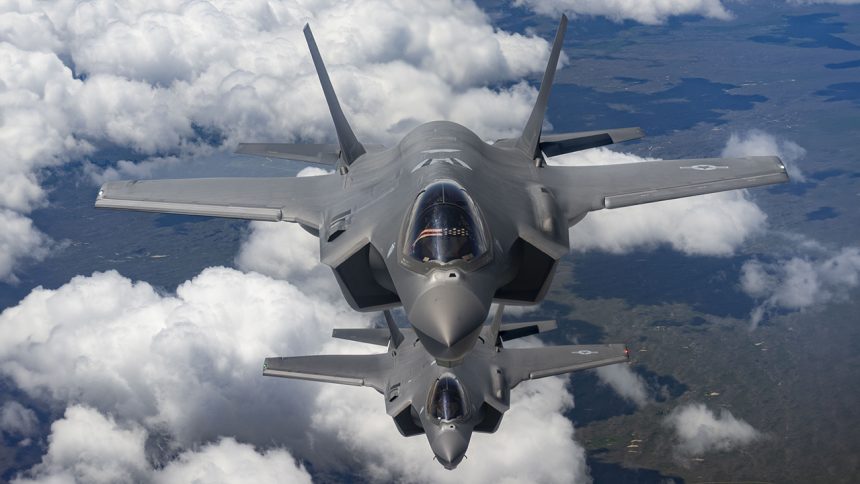More than 100 F-35 jets might be awaiting delivery by the end of the year, requiring another year to actually deliver all of them once cleared.
The U.S. House Armed Services Committee is looking to cut the orders of the F-35 Lightning II for next year, according to a proposed draft of the FY25 National Defense Authorization Act. The FY25 budget request accounted for 68 aircraft, of which 42 are F-35As, 13 are F-35Bs and 13 are F-35Cs, however, the NDAA would reduce them to 58.
To make things worse, ten of these 58 jets would not be allowed to be delivered until the Secretary of Defense certifies the problems are solved, effectively reducing the number of F-35s to be delivered in 2025 to 48, instead of the 68 planned. The decision appears to be related to the ongoing delays due to the Technology Refresh 3 upgrade (TR-3), which provides the “computational horsepower” to support modernized Block 4 capabilities.
A Republican staffer told reporters that they are growing frustrated with the F-35 and the one billion that would be saved by cutting the order would be reinvested in the F-35 program, while the other ten jets withheld would “encourage” the Pentagon to solve the problems. A Democrat staffer added that they want the F-35 program to succeed as the Pentagon needs the jet, but the problems must be solved first.
Meanwhile, a new report from the Government Accountability Office adds new details to the situation.

The GAO report
The Government Accountability Office has once again reviewed the F-35 program to assess its progress and risks. The report lists among the causes of the delays, manufacturing issues, and parts shortages, which caused late delivery of engines and aircraft, and hardware and software delays associated with the TR-3 upgrade.
While mentioning that the program and contractor are resolving these issues, the report adds that progress is made in the modernization of the engine and some other subsystems, while it has not yet been determined how to modernize the thermal management subsystems.
The GAO says that, although the program recently achieved full-rate production, it continues to discover and resolve technical risks with the aircraft. The F-35 program and Lockheed Martin are working to mitigate and resolve technical risks as they are identified, and the report mentions as an example, a new technical risk identified in 2023 related to the F-35C landing gear being overloaded.

Detailing the delays, the report says that Pratt & Whitney did not deliver any engines on time in 2023, with an average two-month delay, because of late delivered parts, engine failing specifications during testing, and deliveries halted by the company when it discovered quality issues with the parts.
The late engine delivery has not affected the production due to the presence of an engine inventory buffer as P&W delivers them earlier than Lockheed Martin needs them for production. The company made quality improvements over the last year, reducing the average quality notifications per engine from 1,443 in 2021 to 647 in 2023.
As for the deliveries of aircraft, the GAO reports that Lockheed Martin delivered 91% of the aircraft late in 2023. The increase in the late deliveries is attributed to the delivery pauses for both aircraft and engine caused by engine quality issues, TR-3 delays, ongoing parts shortages, and manufacturing issues.
Detailing the TR-3 delays, the report mentions that the supplier that produces the integrated core processor is delivering this component late and with quality issues. This forced Lockheed Martin to implement a workaround to keep production going. They used a pool of eight rotatable TR-3 hardware kits, which are installed only for production and removed before the completion of the aircraft.
Problems were also present on the software side, with issues of the software supporting radar and electronic warfare systems being prevalent and even forcing some test pilots to reboot their entire radar and electronic warfare systems mid-flight to get them back online. Some of these issues were solved in later software versions, but the software is still considered unstable.
“These challenges, collectively, will delay the full delivery of TR-3 with new capabilities into 2025,” says the report. “As of January 2024, Lockheed Martin expects to deliver a less capable version of TR-3-enabled software for flight testing in April 2024, which is 9 months behind its original plan, and to start installing it on the fleet in June 2024”.
Right now, upon completing aircraft production, Lockheed Martin is parking every TR-3-configured F-35 at production facilities to await the permanent TR-3 hardware kits and new software, which will not be available for installation until June 2024 at the earliest. If delays continue, the company might exceed its maximum parking capacity, says the report.
According to Defense Contract Management Agency and F-35 program officials, to clear these parking facilities as quickly as possible, Lockheed Martin and DOD are planning to certify an average of 20 planes (both parked and new production) per month until the backlog is gone, while the program typically averages 13 certifications a month. Even at this faster rate, delivering the parked aircraft will take about a year once TR-3 software has been completed and certified.

The TR-3 upgrade
Tech Refresh 3 is considered essential in order to deliver the Block 4 upgrade and the future ones, being described as the IT backbone for all future improvements. TR-3 will be installed in all new production aircraft and retrofitted on all the F-35s already in service back to Lot 10.
The retrofit, which requires 14 days of downtime, will be performed during scheduled maintenance. This way the F-35 will migrate to the open-system architecture and exploit all its advantages, like adding new or improved capabilities on operational aircraft very quickly and at a reduced cost.
Here is how the Air Force described the Technology Refresh 3:
TR-3 provides the computational horsepower to support modernized Block 4 capabilities for the F-35 including: new sensor suites, more long-range precision weapons, improved electronic warfare features, more powerful data fusion, and increased cross-platform interoperability. These capabilities provide the warfighter a combat-edge to identify, track, engage, and survive against advanced air, ground, and cyber threats. TR-3 significantly updates core processing power and memory capacity, which will allow the F-35 to run advanced software packed with state-of-the-art warfighting capabilities.
Over 75 major upgrades expected to be included in the upcoming Block 4 F-35. Among the upgrades there are enhancements of the Electronic Warfare capabilities, radar and electro-optical systems, weapons, cockpit and navigation systems. Some of these upgrades will be delivered in increments until the final configuration, for which an engine upgrade might be required in order to provide more power to all the systems.
Among the unclassified upgrades there are a next generation Distributed Aperture System, a new Integrated Core Processor, cooling systems enhancements, new Electronic Warfare processor and antennas. Unclassified slides from Lockheed Martin also show Auto Ground Collision Avoidance System integration, a new Open System Architecture, Multi-Domain Operations and Missile Defense capabilities, Manned-Unmanned Teaming and extended range with the use of external fuel tanks.
A recently confirmed upgrade that will come with Block 4 is the new APG-85 AESA radar, which will replace the current APG-81. The majority of the details about the Block 4 upgrades, however, are classified. Often considered the F-35’s most ambitious upgrade, the Block 4 is meant to help keep the Lightning II’s fighting edge over potential adversaries through 2070.









